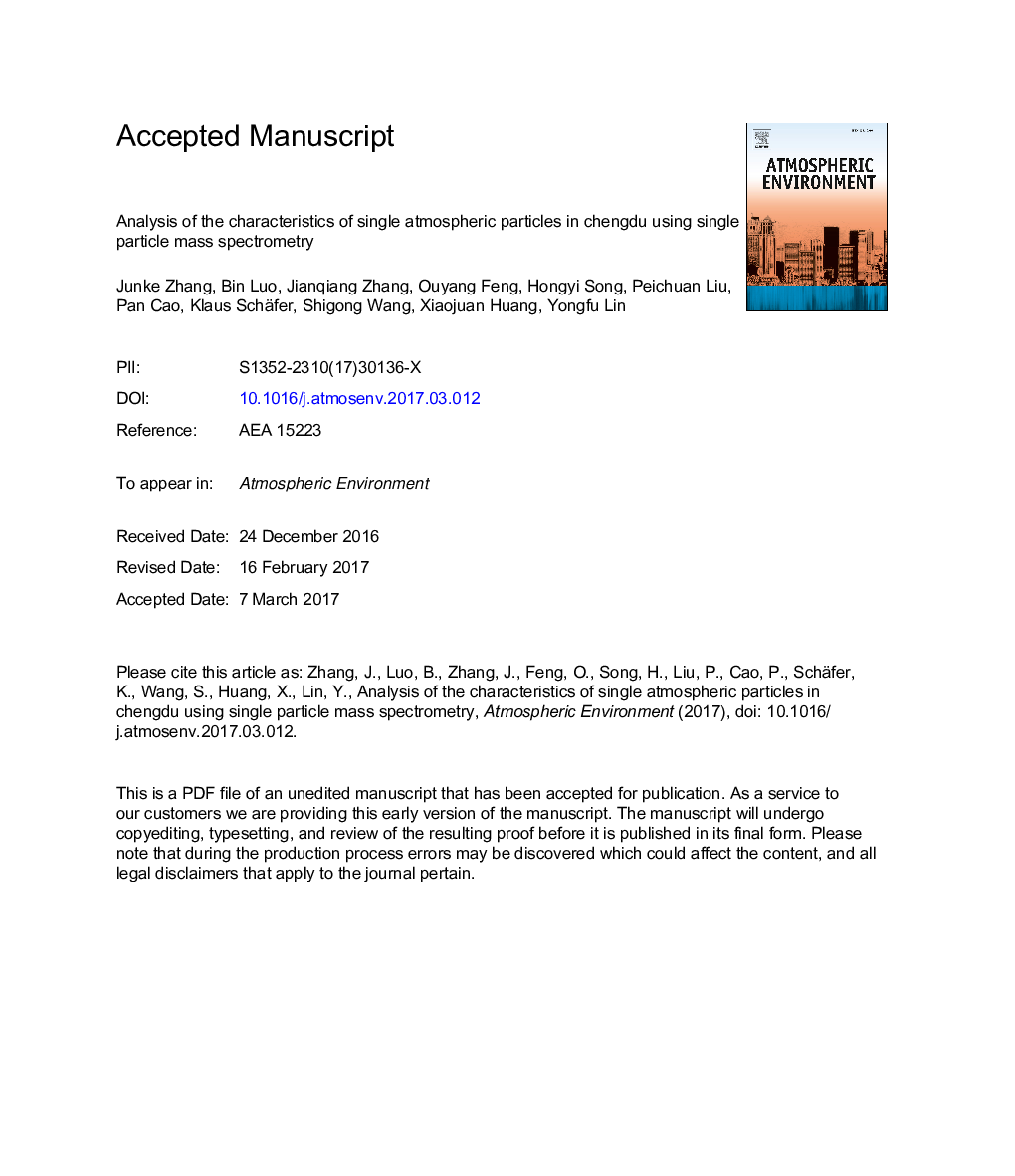| کد مقاله | کد نشریه | سال انتشار | مقاله انگلیسی | نسخه تمام متن |
|---|---|---|---|---|
| 5753334 | 1620317 | 2017 | 26 صفحه PDF | دانلود رایگان |
عنوان انگلیسی مقاله ISI
Analysis of the characteristics of single atmospheric particles in Chengdu using single particle mass spectrometry
دانلود مقاله + سفارش ترجمه
دانلود مقاله ISI انگلیسی
رایگان برای ایرانیان
موضوعات مرتبط
مهندسی و علوم پایه
علوم زمین و سیارات
علم هواشناسی
پیش نمایش صفحه اول مقاله

چکیده انگلیسی
Chengdu, the capital of Sichuan Province and the main city in Sichuan basin, is one of the heavily polluted cities in China. The characteristics of single particles in the atmosphere over Chengdu are critical for the in-depth understanding of their sources, formation mechanisms, and effects. In this study, a continuous ambient aerosol measurement was performed in summer in Chengdu with a single particle aerosol mass spectrometer (SPAMS) and other monitoring instruments. The particulate matter (PM) mass concentrations were low during our study period: PM2.5 and PM10 (aerosol particles with an aerodynamic diameter of less than 2.5 or 10 μm) were 40.5 ± 23.6 μg mâ3 and 67.0 ± 38.1 μg mâ3, respectively. This was mainly caused by the favorable meteorological conditions during the summer season. Twelve particle types were identified and classified as dust particles (Dust), four types of carbonaceous particles, organic nitrogen and potassium containing particles (KCN), four types of secondary particles, Na-K-containing particles (NaK), and metal-containing particles (Metal). The highest contribution of particles was from potassium with elemental carbon (KEC; 23.0%), and the lowest from elemental carbon (EC; 0.2%). All types of particles showed different diurnal variations and size distributions, which were closely related to their sources and reactions in the atmosphere. The eastern and southern air masses corresponded with high PM2.5 mass concentrations. The contributions of KEC and K-sulfate (KSO4) particles to PM2.5 were clearly higher than those in air masses from the southeast. During polluted days, the contributions of KEC and KSO4 particles increased, while the contributions of organic carbon (OC), combined OC and EC particles (OCEC), and K-nitrate (KNO3) particles decreased. This shows the importance of biomass burning and industrial emissions for the PM2.5 pollution in Chengdu. These results will be useful for the in-depth understanding of the PM2.5 pollution in Chengdu, even in Sichuan basin.
ناشر
Database: Elsevier - ScienceDirect (ساینس دایرکت)
Journal: Atmospheric Environment - Volume 157, May 2017, Pages 91-100
Journal: Atmospheric Environment - Volume 157, May 2017, Pages 91-100
نویسندگان
Junke Zhang, Bin Luo, Jianqiang Zhang, Feng Ouyang, Hongyi Song, Peichuan Liu, Pan Cao, Klaus Schäfer, Shigong Wang, Xiaojuan Huang, Yongfu Lin,